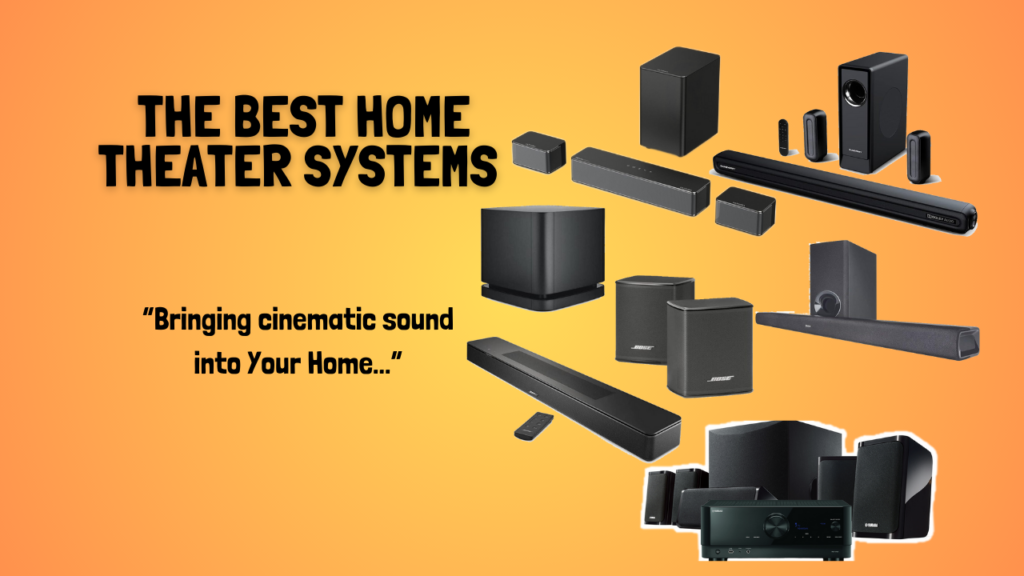There are a plethora of reasons why using a television to play games can improve your overall gaming experience. Not only are they larger than most PC monitors, but the top 4K TVs can now compete in terms of fidelity and functionality with the greatest gaming monitors. Plus, there’s the added benefit of advanced technology like OLED panels, which have yet to make an impact on your average PC monitor. I could go on and on, but if you’d like to find out more, just keep scrolling to read our 4K TV Buying Guide For Gaming this 2021.
Want To See Our Top Recommendations For The Best 4K TVs For Gaming? Check Out Our List Here.
PC Monitors Vs. 4K TVs For Gaming
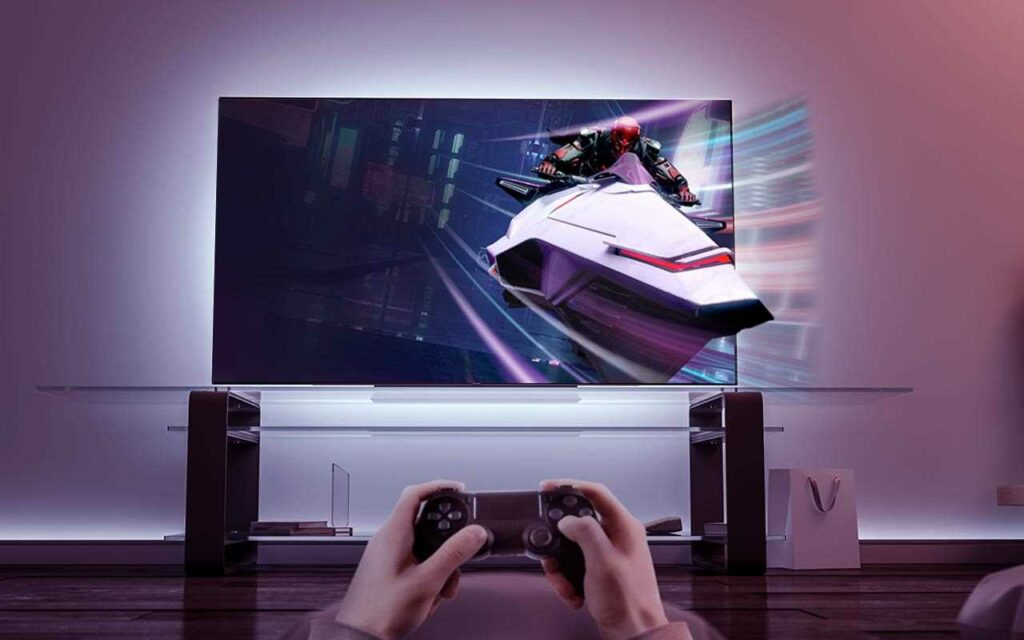
On the surface, it may seem like TVs and PC monitors have a lot in common, but the specifications built into their systems are what separate them. When compared to PC monitors, TVs will typically have substantially faster refresh rates and better pixel density. On top of that, they also usually have reduced input lags and quicker response times.
If that doesn’t convince you, the best 4K TVs for gaming on the market today are getting increasingly affordable, with a plethora of excellent models available at reasonable costs. As a result, it’s difficult to argue not to use a 4K TV as your gaming monitor. Of course, there’s the issue of space and size but 4K TVs also come in at a variety of sizes to fit your specific needs.
Furthermore, in terms of PC gaming, your options for the gorgeous OLED panel technology are confined to high-end gaming laptops or the best gaming TVs in the market. Since the release of the Nvidia RTX 3080 and AMD RX 6800 XT, 4K gaming has been completely accessible. It would be a shame if you missed out on this opportunity.
So Why Is A TV Better For Gaming?
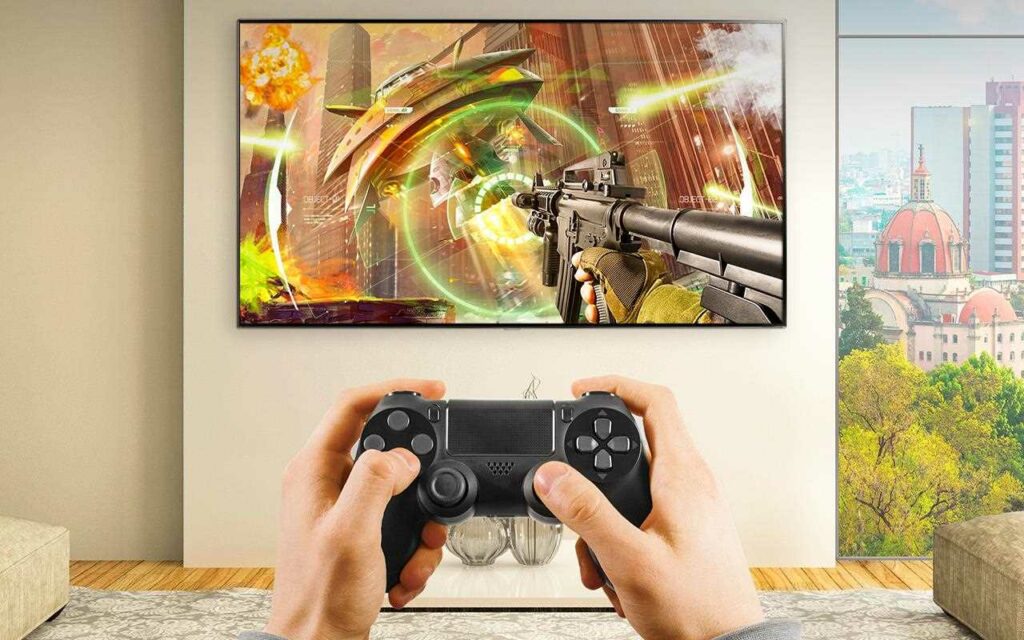
Aside from the crisp and sharp images that are the main selling point of 4K TVs, many of these devices also boast quicker refresh rates, low-latency game modes, as well as HDR options in order to deliver excellent imagery compared to your standard PC monitors.
TVs are also often larger and more concerned with certain aspects like color reproduction and viewing pleasure than with pixel density or responsiveness. Thanks to display technologies targeted at the typical living room settings, they also tend to be considerably better for viewing at wide angles.
Because of the introduction of OLED technology, several gaming-specific TVs now have exceptionally low input latency and pixel response times, which reduces the amount of motion blur and ghosting that can occur. Furthermore, with refresh rates on 4K TVs easily hitting 120hz, some TVs are now able to match the responsiveness of even the best PC monitors in the market.
Why Choose 4K?
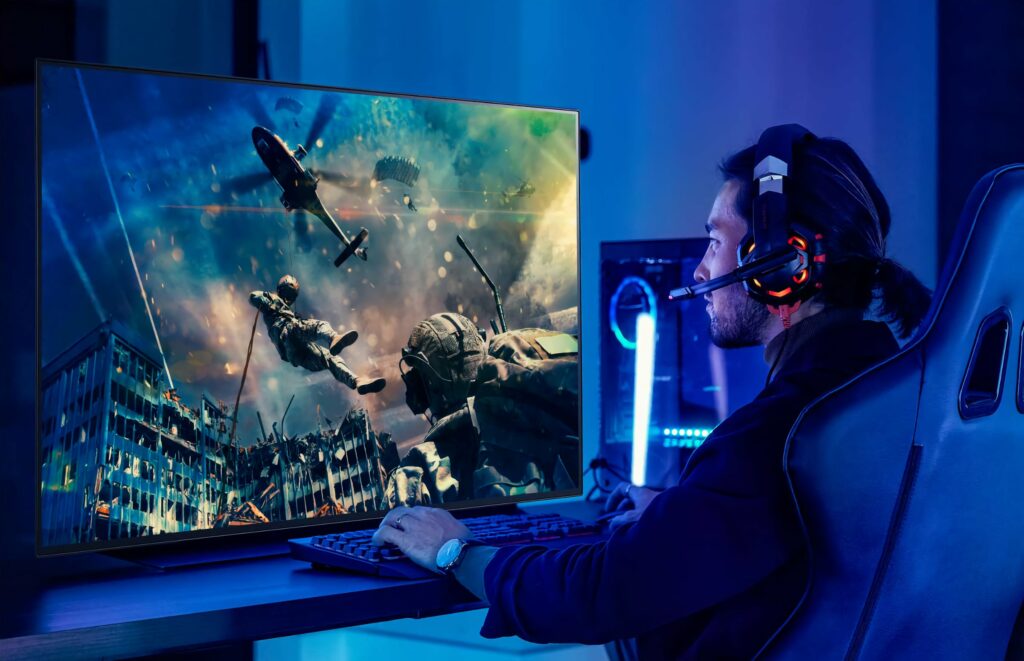
This is the highest image resolution your TV can display and will provide you with crazy sharp and detailed pictures regardless of the content you’re streaming or playing. A 4K TV or a 4K ready TV, can display images with a resolution of 3840×2160 pixels. It’s also referred to as UHD or Ultra HD by some brands and manufacturers.
Both the PS4 Pro and Xbox One X are capable of exporting a 4K stream to your 4K TV, in case you weren’t aware. Almost every gaming television now that has been released recently supports 4K. Of course, there is also the appeal of an 8K TV, but I find those still pretty out of reach in terms of pricing.
Ready To Buy A 4K Gaming TV? Check Out Our Top Picks For The Best 4K TVs For Gaming Here.
What To Consider
Now that we have discussed why you should upgrade to a 4K TV, here are some terms and certain specifications you might want to consider and keep in mind as you look for your next ultra HD screen.
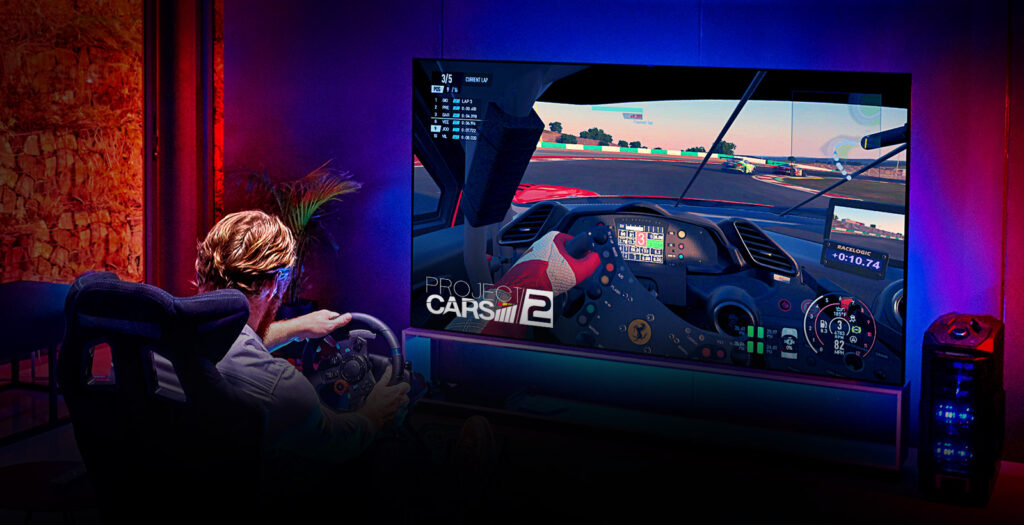
Types Of Screens
As you go shopping, you’ll come across different types of display panels in your hunt for your 4K TV: LED, OLED, and the most recent technology from Samsung, QLED. While they may share similarities in their names, they couldn’t be any more different and distinct in terms of panel technology.
LED

Independent image creating and lighting layers on LCD/LED panels provide the final image you see. The pixels (LCD) that form the actual visuals you see in this interaction are illuminated by the backlight (LED). To achieve the same level of pure black as LED displays, TV manufacturers have launched completely array backlighting systems, which divide the backlighting layer into zones known as “local dimming zones.”
Keep in mind when looking at this feature that the more local dimming zones a television has, the better. LED TVs, on the other hand, can achieve substantially higher peak brightness levels, but they have narrower viewing angles and muddier blacks than OLED TVs since the display can’t totally turn off their backlight.
OLED

Another type of TV panel that is classified as an emissive screen technology is the Organic Light Emitting Diode or OLED. LCD and plasma panels, on the other hand, require back-lighting or edge-lighting to produce images on the screen, but OLED displays do not. Backlit or edge-lit TVs have LEDs that are lit in groups or lines to generate a picture.
This means that the pixels in an OLED screen produce their own light by using an electric current to produce their own compounds. Because OLED TV pixels produce both the picture and their own light, they may reach true darkness without any current flowing through them. In a nutshell, if there is no energy, there is no light.
On OLED TVs, each LED on the screen can be individually lit and switched on or off to generate a picture. This is what enables OLED screens to have more accurate black levels. You get precise edges on images and deep blacks with the ability to turn off each individual LED because there is no illumination streaming through.
Aside from that, OLED displays are typically dimmer than LCD displays, and picture retention (also known as burn-in) issues might arise from time to time. This problem occurs when static things on the screen, such as a network logo or a health indicator, get permanently imprinted on the screen.
Looking For A 4K TV With An OLED Panel? Check Out Our Review Of The LG OLED C1 Series Here.
QLED
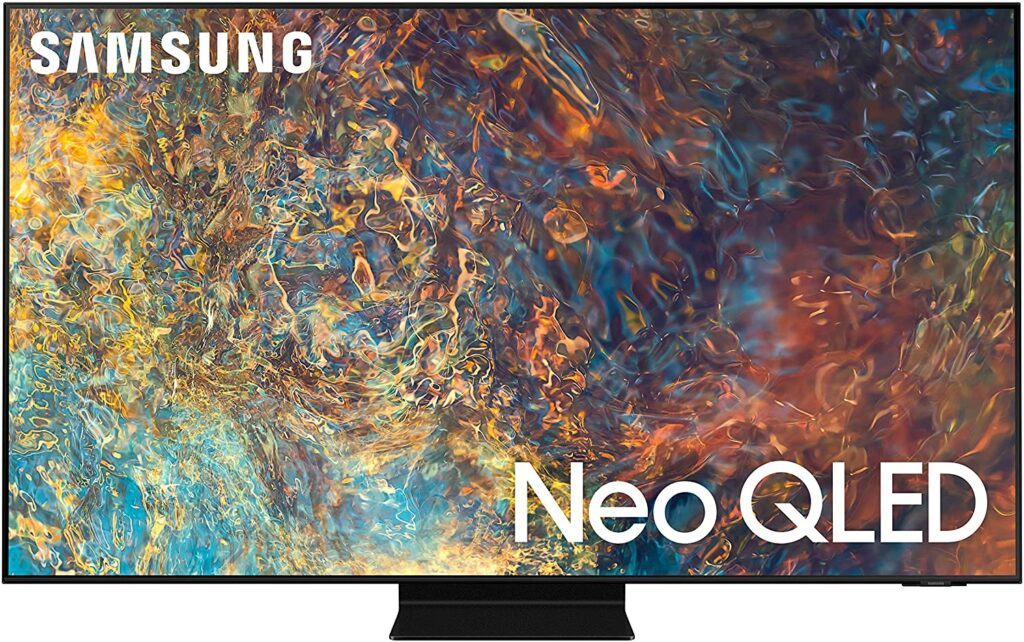
Samsung introduced QLED panels, which is a unique technology that other companies have adopted. The full abbreviation for QLED is Quantum Dot Light Emitting Diode. When utilized to generate a picture on a screen, quantum dots are light-emitting particles that can be far brighter than LEDs or QLEDs. As a result, QLED televisions feature more vibrant colors and contrast than other panel types.
The display is either backlit or edge-lit, just like ordinary 4K TVs, which can make a considerable difference in black levels. In addition to offering brilliant colors, back-lit QLEDs can produce clean images and blacks that rival even the most premium OLEDs on the market. These QLED TVs, in essence, have an extra layer of quantum dots on the back that increases the brightness and color range of normal LED panels.
In this approach, quantum dots act as an enhancement filter, resulting in brighter and purer light than LED panels. This is why Samsung TVs with QLED panels can attain peak brightness levels that are thousands or even tens of thousands of times higher than OLED panels in the industry. As a result, they’re fantastic for gaming in your well-lit living room.
Looking For A 4K TV With A QLED Panel? Check Out Our Review Of The Samsung QN90A Here.
HDR Capabilities
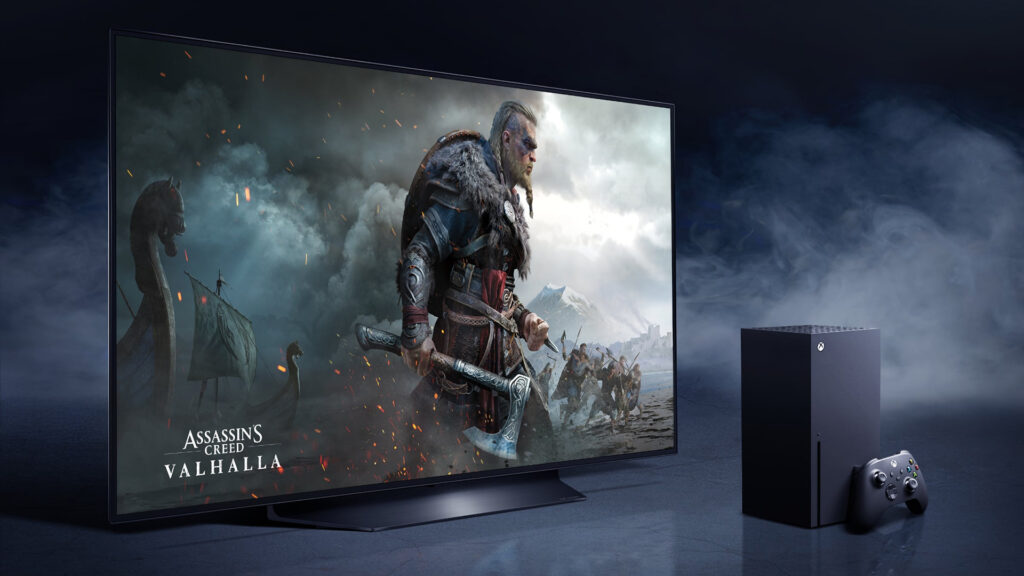
HDR is an abbreviation for High Dynamic Range. It’s a color-processing method used in games, movies, TV shows, and other streaming entertainment. This has also become common on practically all 4K televisions available.
On the other hand, HDR isn’t simply about contrast. It’s also about emphasizing color differences and how game designers and developers can use them to bring out more details in their work. If you can distinguish highly similar color tones, you can make graphics crisper and the colors pop.
For HDR, a minimum brightness of 400 nits is required. Though, in recent years, 4K TVs have been able to achieve better brightness. Overall, having HDR capability improves picture quality significantly and is one of the most enticing aspects of 4K TVs.
HDR10 and Dolby Vision are the two major HDR formats supported by today’s 4K TVs. The majority of 4K TVs that support HDR10 are available on the market. Meanwhile, Dolby Vision is only supported by a small number of high-end televisions. HDR10 is all you need and should demand when it comes to gaming. In fact, HDR10 is supported with the PS4, PS4 Pro, Xbox One S, and Xbox One X.
If you have a standalone 4K Blu-Ray player or a streaming media box that supports Dolby Vision, a Dolby Vision TV is only useful. However, you will be unable to play HDR games on your chosen console.
Response Times & Refresh Rates

When it comes to 4K gaming televisions, you’ll hear a lot about the reaction speed of the panel. This is the speed at which the colors on your television shift, such as from black to white and back to black. Most 4K TVs have response times faster than we can perceive unless you’re very precise and demand fast response times for your games.
As a result, unless it’s absolutely necessary, it has little effect on your overall game experience. Purist gamers, on the other hand, will demand the fastest response time feasible.
When it comes to refresh rates, most TVs can only support 60Hz up to 120Hz. Currently, no 4K TV has a refresh rate higher than that. If you want to play at 144Hz or even 240Hz, you might want to look into dedicated 4K gaming monitors instead.
Keep In Mind…
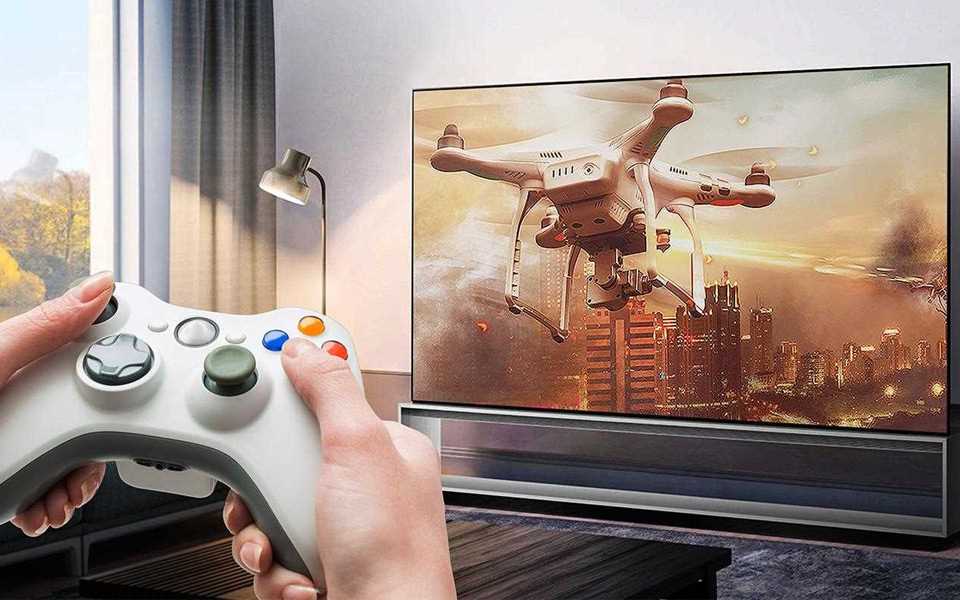
While a 4K gaming TV sounds really cool and can easily replace your current PC gaming monitor, you also need to make sure that your PC is capable of handling this type of resolution. Due to the substantially better visual quality, 4K screens are naturally more demanding on your PC’s resources. In turn, this might take a toll on your machine if it’s not powerful enough.
If your PC is up to par, 4K on a larger screen will be a smooth and enjoyable gaming experience for you and your PC. If not, you may end up having to play at a lower resolution, such as 1440p or 1080p. Because your gaming TV may not be capable of handling the upscaling required. Due to the size difference between a TV and a monitor, the image might be blurrier than planned.
Conclusion
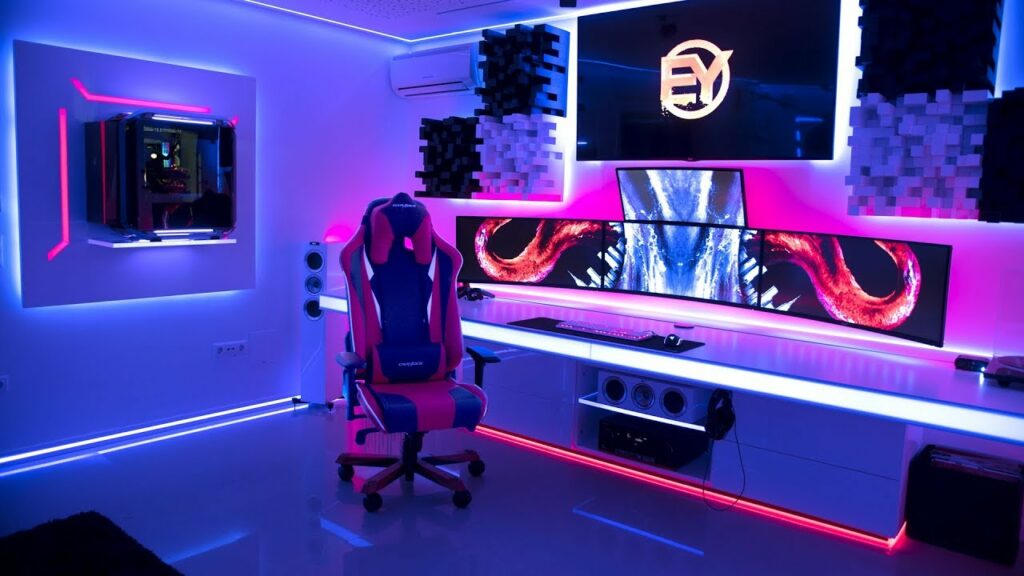
Overall, the best gaming experience depends on your own personal standards. Both 4K TVs and dedicated PC monitors offer advantages as well as their own drawbacks. But if you’ve been looking to upgrade your display to a 4K TV, then I hope this guide was able to convince you on why you should go for it.
Have you already bought a 4K TV for your gaming? Which one did you buy? Let me know in the comments section below if you have any insights and experiences to share or suggestions and questions to ask. I would love to hear all your thoughts!
Recommended reading for you:
- Best 4K TV For Gaming 2021: Time To Level Up Your Screens
- LG OLED C1 Review: The Best 4K TV For Gaming?
- Best Android Tablets For Gaming In 2021: Our Top Picks
- Apple iPad 8th Gen Review: A Great Value, Kid-Friendly Tablet
- Android Tablets Buying Guide 2021: What You Need To Consider
- Samsung Galaxy Tab S7 Plus Review: The Best Android Tablet?
- The Best Headphones For Gaming In 2021
- Best 4k Gaming Monitors 2021: The Sharpest & Brightest Displays
- The Asus ROG Strix XG27UQ Review: Immerse Yourself In The Latest AAA Games With The Best 4k Gaming Monitor
- The LG 27GN950-B Review: Watch Your Games Come Alive On 4k
- How To Buy The Best 4k Gaming Monitors 2021
- Best Gaming Desks 2021: Reign Supreme In Comfort & Style
- Your Quick Guide To Buying PC Gaming Desks 2021
- Best Computer Gaming Chairs For Adults 2021: For Next Level Gaming!
- Samsung QN90A Review: Better Than OLED TVs?
- The Best Tablets For Kids In 2021: Parent-Approved & Kid-Friendly!
- How To Choose The Best Tablet For Your Kids 2021
- The Amazon Fire HD 10 Kids Pro Review: A 2021 Review On The Best Tablet For Your Child
- Microsoft Surface Pro 7 Review: The Complete Package?
- SteelSeries Arctis Pro Review: The Best Gaming Headset For Audiophiles
- Razer BlackShark V2 Pro Review: The Best Wireless Gaming Headset?
- Best Computer Gaming Chairs For Adults 2021: For Next Level Gaming!
- The Ultimate Computer Gaming Chair Guide For Every Gamer This 2021.
- Cougar Argo Gaming Chair Review: Is It The Next Best Thing?
- The Cougar Mars 120 Gaming Desk Review: Your Superior Gaming Desk With LED Lights
- The Arozzi Arena Gaming Desk Review: Go Big Or Go Home With Your Gaming Setup
- Respawn 110 Gaming Chair Review: Too Good To Be True?












